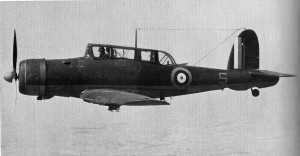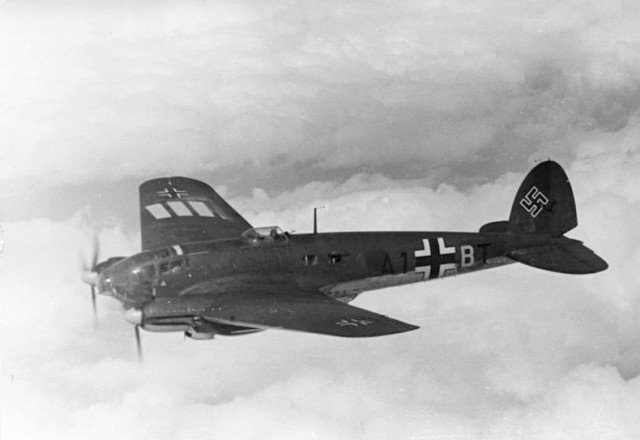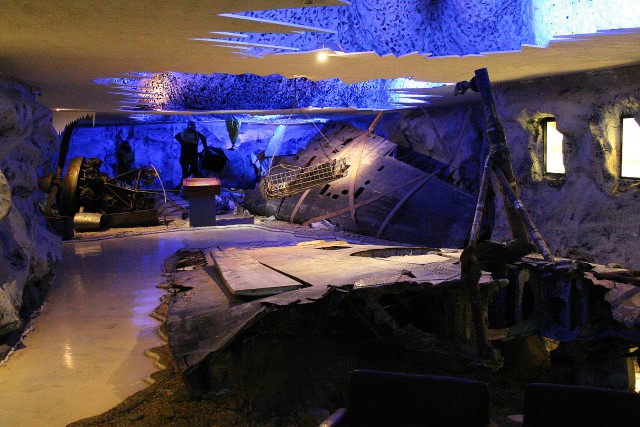Into the White was a 2012 Norwegian film loosely based on real events from World War II’s Norwegian Campaign, when the Allies tried to keep the Germans from engulfing Norway in their quickly spreading military conquests.
The film is a fun and captivating dramatization of how the crews of a German Heinkel He 111 bomber and a British Blackburn Skua (which had shot down the German bomber and crash-landed soon after) survived in the remote Norwegian wilderness in late April 1940.
There are, as would be expected, many discrepancies between the movie and the actual events, but both the true story and the fictionalized one are fascinating tales of survival during a tumultuous time.

After Germany had invaded Poland and the British and French were officially at war with the Third Reich, very little conflict ensued between these countries. All had begun to shore up their defenses against each other and naval combat was beginning to break out in the Baltic and North Seas. This was mostly due to the German attempts to keep their supply of desperately needed Swedish iron ore flowing in to feed their war machine.
Much of this iron came via Norway. The northern port of Narvik was of special importance because the iron could be shipped from there when the Baltic Sea was frozen and treacherous during the winter.
As Europe descended into war, Norway began mobilizing its army, navy, and air force to guard against any parties violating its neutrality. The British and Germans grew more and more bold in doing just that to take hits at each other with navy and aircraft. By early 1940, Hitler was resolved to invade Norway to secure its strategic importance for the war effort against the Allies.
The entire Norwegian Campaign lasted from April 9th til June 10th 1940 until the German invasion of France shifted the bulk of the Allied forces south and Norway was captured. The Norwegian government went into exile in London.
Despite all the horrors of war, some cooperation between enemies happened way out in the wilderness, if only for survival.
The Heinkel bomber flown by Lieutenant Horst Schopis was shot down by Captain R.T. Partridge and his radio operator R.S. Bostock in their Skua. Schopis’ tail gunner Hans Hauck was dead on impact, but Schopis, along with Unteroffizier Josef Auchtor and Feldwebel Karl-Heinz Strunk, the remaining survivors of his crew, now faced the vast, cold unknown.
They weren’t alone, however. Partridge and Bostock had crash-landed on a frozen lake not too far away after their engine failed.
The two crews were nearest to Grotli, Norway, but surrounded by mountains and lakes, and miles from any road.

While trying to bring his sputtering plane into a safe landing, Partridge spotted an old reindeer hunter’s cabin not too far away. They hiked there through the snow, only to soon be set upon by the German crew with pistols and knives at the ready.
Thinking quickly and trying to break down the language barrier in a mix of German and English, Partridge convinced the Germans that he and Bostock were survivors of a downed Vickers Wellington Bomber (and not the aces that had brought their plane down).
The film adaptation of these events goes quite off course from this point. It portrays both crews staying in the cabin together, the British indignantly sitting as POWs while starting to warm up to their roommates and all cooperating more together over a series of many stormy nights while the food quickly runs out.
In truth, according to Schopis’ memoirs, Partridge had suggested on the first day they met that the Germans stay in the cabin and the Brits look elsewhere for shelter. That night, the British stumbled upon the Grotli Hotel, closed for the winter, but offering shelter from the harsh weather.
The Germans arrived the next morning, and all shared breakfast together.
Partridge and Strunk left that day to search for people and, hopefully, save both crews from dying. It would be no use to either party to be found dead from starvation when the seasons finally changed
They quickly found a Norwegian ski patrol, close enough to the hotel that Bostock could hear the shot being fired which he assumed was Feldwebel Strunk killing his captain. But it was Strunk who lay dead, reportedly shot by the ski patrol as he reached for his pistol.
Schopis and Auchtor were taken into custody by the Norwegians, turned over to the British, and eventually sent to a POW camp in Canada where they spent the remainder of the war.
Partridge and Bostock, under suspicion for their cooperation with Germans, managed to convince the Norwegians they were, at least, English by showing them their uniforms’ tailor labels and a half crown coin. Also, through a huge stroke of luck, the commander of the ski patrol happened to have some mutual acquaintances with Partridge.
The two British flyers were set free and hiked to Alesund, a town on the Norwegian coast, many miles away and under heavy German attack. The ship that was supposed to evacuate them and other British soldiers never arrived, so they stole a car and drove to northeast to Andelsnes, where they managed to secure passage back to England.

In June 1940, while assaulting the German battleship Scharnhorst, Partridge was shot down and captured by the Germans, spending the rest of the war as a POW. Bostock, once again flying a Blackburn Skua, was killed in the same battle.
Many years later, in 1977, Schopis received a phone call from Partridge, and the two met as friends in their hometowns of Munich and London.
Partridge’s Skua was recovered and sits on display at the Fleet Air Museum in Yeovilton, Somerset, England. Schopis’s wrecked Heinkel still waits, atop the lonely mountains near Grotli, Norway.
By Colin Fraser for War History Online
All pictured sourced from wikipedia.com, featured image: Into The White